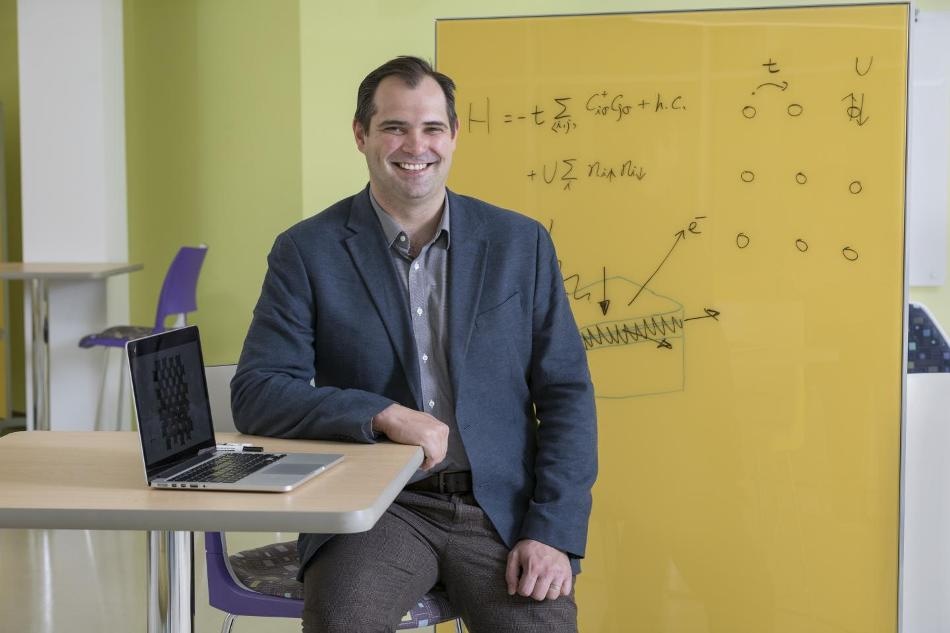Jan 24 2019
A new study by researchers from the Binghamton University and the State University of New York has paved the way for simplifying the process of water splitting, which involves harvesting solar energy to produce energy-dense fuels.
 This is Binghamton University Associate Professor of Physics Louis Piper. (Image credit: Binghamton University, State University of New York)
This is Binghamton University Associate Professor of Physics Louis Piper. (Image credit: Binghamton University, State University of New York)
The key idea is to generate a solar fuel: hydrogen gas, which can be burnt to release energy on demand without releasing carbon dioxide. For water splitting, we use visible light to generate photo-excited negative electrons and positive holes that are then separated in order to catalyze water into oxygen and hydrogen gases. Storing gases is more straightforward (and cheaper) than employing battery set-ups, so this approach has the benefit of clean energy harvesting and storage.
Louis Piper, Associate Professor of Physics, Binghamton University
A group of researchers including Piper found out that when vanadium pentoxide (M-V2O5) nanowires are “doped” (that is, metal ions are added), the highest filled energy levels are raised for more efficient transfer of holes from the quantum dots to the nanowires, that is, isolation of the photo-excited electrons from holes.
If you don’t dope, then there is a buildup of positive holes that corrode the quantum dots (referred to as photo-corrosion). Using computation and chemical intuition, we predicted doping with Sn2+ ions would result in excellent energy alignment and efficient charge separation. We saw a ten-fold increase in the amount of solar-harvested hydrogen we obtained.
Louis Piper, Associate Professor of Physics, Binghamton University
Currently, the team has joined hands with colleagues at the University of Buffalo and Texas A&M University to improve the hydrogen gas evolution by adorning the quantum dots with platinum.
“We expect platinum to improve things by acting as a catalytic site for the electrons, but our ultimate goal is to find less costly alternatives to decorate with,” stated Piper.
Scientists at Diamond Light Source and Brookhaven National Laboratory also contributed to this study.
The paper titled “Hole Extraction by Design in Photocatalytic Architectures Interfacing CdSe Quantum Dots with Topochemically Stabilized Tin Vanadium Oxide” was published in Journal of the American Chemical Society.